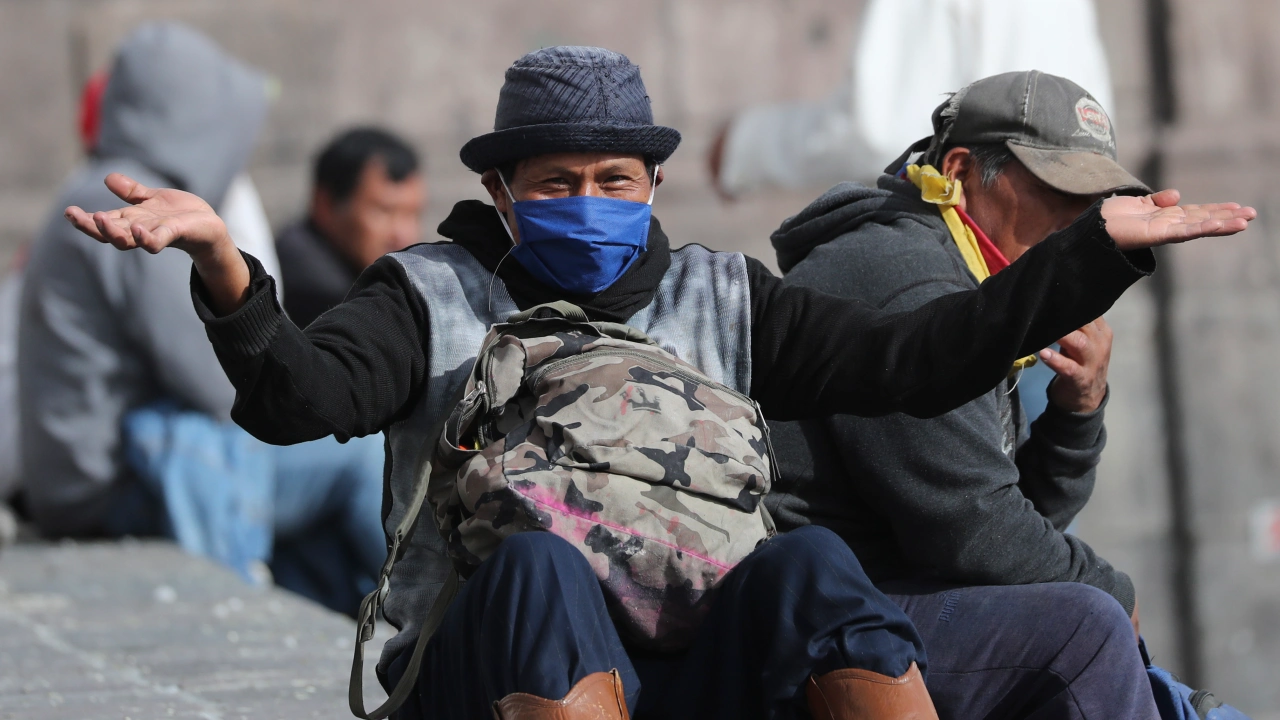Ecuador ranks third in the prevalence of food insecurity in South America, behind Argentina and Peru, according to a study published by the FAO.
“It’s not always bought, it’s not always eaten,” says informal vendor Eulalia García, who suffers from lack of access to food, one of the biggest problems left by Covid-19 in Ecuador.
A study by the Food and Agriculture Organization of the United Nations (FAO) indicates that the pandemic has caused 36.8% of the 18 million Ecuadorians to have some difficulty in obtaining nutritious food.
This means that 6.6 million people face food insecurity. Of this latter figure, 2.3 million suffer from severe food insecurity and 4.3 million face moderate food insecurity.
In the first case, the FAO explains that these are people who spend one or several days without eating. While moderate food insecurity is related to the eventual lack of food due to lack of money.
“These are people who are uncertain about their ability to obtain food. Probably, they missed a meal in the day or occasionally run out of them,” adds the agency.
This is the case of García, who sells garbage bags in Conocoto, southeast of Quito. She says that sometimes she doesn’t eat so that her children “have a snack and don’t get sick.”
She adds that there are days when the only food they taste comes from the hands of strangers, as happened last Friday afternoon.
That day, while Garcia and her children were on one of Conocoto’s busiest streets, a family passing by handed them each a plate of food.
“Since last night we haven’t eaten anything, but I’m happy because today my children are taking something to eat,” she says with a smile.
Cheap and poorly nutritious food
The FAO warns that the main problem that causes food insecurity is that people, to satisfy hunger, turn to cheap and poorly nutritious food.
“The increase in obesity and other forms of malnutrition is, in part, a result of this phenomenon. Highly processed and hypercaloric foods, with a high content of saturated fats, sugars and salt, are cheaper and easier to obtain than fresh fruits and vegetables.”
The agency adds that the stress of living with uncertain access to food and going without food for periods leads to physiological changes, which can contribute to being overweight and even obesity.
“Children who face hunger, food insecurity and malnutrition may be at increased risk of overweight, obesity and chronic diseases such as diabetes,” says the FAO.
Although it seems a paradox, in countries like Ecuador, malnutrition and obesity coexist, and both can be a consequence of food insecurity.
The head of the Ecuador Secretariat Grows without Child Malnutrition, Erwin Ronquillo, says that the Government will invest $330 million this year to reduce chronic child malnutrition, which affects one in three children under two years of age.
Food insecurity in the region
Ecuador ranks third in the region with the highest prevalence of food insecurity. FAO data shows that only Argentina and Peru have worse indicators.
In Argentina, for example, 37% of its inhabitants have difficulty accessing food, a figure that in Peru rises to 50.5%.
At the other extreme is Chile, where only 17.4% of its citizens face some barrier to obtaining food.
The FAO says that the goal of eradicating hunger and food insecurity by 2030 is increasingly distant, as the number of people who do not have the resources to access a nutritious diet increases every year.


Eggs are a great option to counter food & food quality deficiencies. https://www.dietdoctor.com/nutrition/eggs
Compared to most high protein foods they’re also ‘easy on our planet.’ USDA study shows both washed (USA-refrigeration required) & unwashed (Ecuador) eggs maintain better quality if refrigerated.